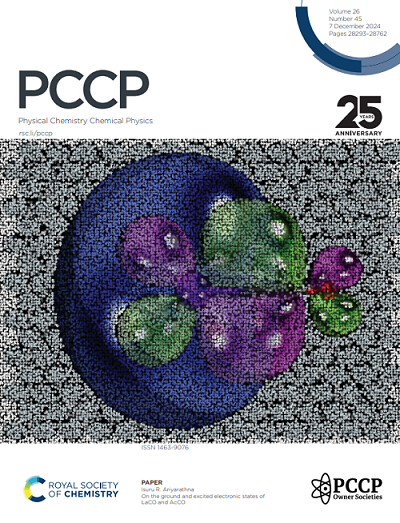Uncovering the Role of Fluorine Positioning on the Cationic Properties of 2,4-Difluoropyridine
IF 2.9
3区 化学
Q3 CHEMISTRY, PHYSICAL
引用次数: 0
Abstract
Fluorine substitution exerts a profound influence on the electronic structures, ionisation behaviours, and vibrational dynamics of pyridine systems, enabling the precise tuning of their molecular properties. 2,4-Difluoropyridine (2,4-DFP) exhibits a unique combination of inductive and resonance effects owing to the presence of fluorine atoms at the ortho and para positions relative to the nitrogen atom. However, studies on its ionisation-induced structural changes and vibrational dynamics remain limited. In this study, high-resolution vacuum-ultraviolet mass-analysed threshold ionisation mass spectroscopy and Franck–Condon analysis were employed to investigate the ionisation-induced structural and electronic properties of 2,4-DFP. The spatial arrangement of fluorine atoms selectively stabilised the nitrogen lone pair and the π orbitals in the pyridine ring, significantly affecting valence orbital energies. Precise measurements of the adiabatic ionisation energies of 2,4-DFP highlighted the synergistic effects of para-resonance and ortho-inductive withdrawal, thereby elucidating their roles in molecular stabilisation. Vibrational analyses of the proximate cationic states revealed mode-specific structural distortions, underscoring the dynamic changes induced by ionisation. A comparative evaluation of 2,3-, 2,5-, and 2,6-DFP derivatives demonstrated how fluorine positioning governs ionisation energies, molecular geometries, and vibronic interactions. This study advances the understanding of the chemistry of fluorinated pyridines and offers insights into their potential applications in the tailored molecular design of functional materials and chemical systems.求助全文
约1分钟内获得全文
求助全文
来源期刊

Physical Chemistry Chemical Physics
化学-物理:原子、分子和化学物理
CiteScore
5.50
自引率
9.10%
发文量
2675
审稿时长
2.0 months
期刊介绍:
Physical Chemistry Chemical Physics (PCCP) is an international journal co-owned by 19 physical chemistry and physics societies from around the world. This journal publishes original, cutting-edge research in physical chemistry, chemical physics and biophysical chemistry. To be suitable for publication in PCCP, articles must include significant innovation and/or insight into physical chemistry; this is the most important criterion that reviewers and Editors will judge against when evaluating submissions.
The journal has a broad scope and welcomes contributions spanning experiment, theory, computation and data science. Topical coverage includes spectroscopy, dynamics, kinetics, statistical mechanics, thermodynamics, electrochemistry, catalysis, surface science, quantum mechanics, quantum computing and machine learning. Interdisciplinary research areas such as polymers and soft matter, materials, nanoscience, energy, surfaces/interfaces, and biophysical chemistry are welcomed if they demonstrate significant innovation and/or insight into physical chemistry. Joined experimental/theoretical studies are particularly appreciated when complementary and based on up-to-date approaches.
 求助内容:
求助内容: 应助结果提醒方式:
应助结果提醒方式:


